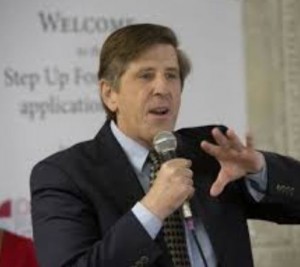
I often get asked how I went from being a teachers union president to the president of the country’s largest private school choice organization. It feels like a natural transition to me, but when I step back I can see how others might find it an unusual journey.
My wife likes to tell everyone how boring I am and that I’ve been giving the same empowerment speech since I was 22. She’s right on both counts.
My world view has changed little since I was first elected a local teachers union president in 1978. I was 22, and believed strongly that organizations and societies work best when they maximize the value of their greatest asset – their people. And since individual empowerment is a necessary condition for healthy human development, my work in public education has always focused on creating well-managed education systems that empower individuals.
As a teachers union leader in the 1970s, 80s, and 90s, I was a strong advocate for teacher empowerment. I traveled across the country on behalf of the National Education Association, our nation’s largest teachers union, preaching the gospel of school-based decision making.
But while the NEA leadership regularly highlighted my views in speeches, publications and press events, most of the NEA bureaucracy thought I was naïve and wrong. They saw teachers unions as being in the business of protecting teachers from bad administrators, clueless politicians and dysfunctional school districts. They saw decentralization of power as antithetical to their efforts.
These teachers union traditionalists believe teacher power should be centrally controlled and used by the union for the greater good of teachers collectively, which is where I split from them. I believe a primary function of collective teacher power is the empowerment of individual teachers.
A good example of this difference is how teacher compensation is determined. I believe in free agency. That is, teachers should be able to sell their services to the highest bidder. I would use the collective power of teachers to strengthen free agency, similar to what the professional sports unions do. Teachers unions strongly oppose free agency. They believe all teacher salaries should be determined centrally through a one-size-fits-all salary schedule.
Another good example is found in how teachers unions think about charter schools. I believe teachers unions should help teachers start and run their own schools, while the traditionalists think all publicly-funded schools should be centrally owned and managed by school boards and district bureaucracies.
The school choice movement is founded on a belief in parental empowerment, so adding that to my lifelong commitment to teacher empowerment feels natural to me. I believe in giving teachers the power to create and manage new and innovative learning options for families, and I believe in giving families the power to match their children with the learning options that best meet their needs. For me, both are necessary components of a highly effective and efficient public education system.
I’m a strong advocate of teachers organizing themselves and using their collective power to promote the public good. I’m convinced teachers unions will eventually embrace a model that does that. But this shift is still years away. Until then, teachers unions will continue to be one of the biggest obstacles to improving our country’s public education system.



[…] since a little humility is good for the soul, you should also click on this story about Doug Tuthill, former Florida teachers union president and current president of Florida’s […]
[…] to decide. Truly local empowerment. In a great new redefinED post, Doug Tuthill explains his transition from a local union president to a school choice champion. His basic philosophy didn’t much change, as even in his early days he stood at odds with […]